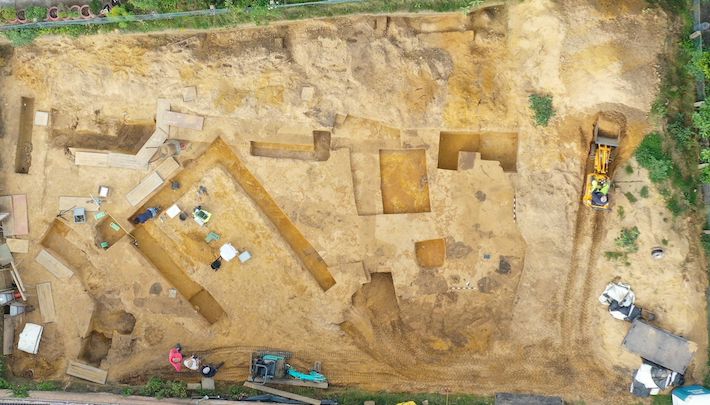 WESTPHALIA-LIPPE, GERMANY—Traces of two buildings and a sacrificial pit have been uncovered at a Roman military camp in northwestern Germany, according to a Live Science report. The site, known as Haltern, was first excavated in 1928. The two structures were “based on the typical large podium temples made of stone that could be found in numerous Roman cities at the time of Emperor Augustus,” said Bettina Tremmel of the Regional Association of Westphalia-Lippe (LWL). Augustus was the first emperor of Rome and ruled from 31 B.C. to A.D. 14. A shallow pit was found between the two buildings. It is not clear how the buildings were used, however. Part of a larger complex of structures, one of the buildings may have been used as a meeting place for military officials, and then used as a workshop, based upon tools found in the area. “In our current state of research, the two small temples and the niche building with the burning pit are a unique building group within a Roman camp,” explained Michael Rind of LWL. To read about another Roman military camp in Germany, go to "Caesar's Gallic Outpost," one of ARCHAEOLOGY's Top 10 Discoveries of 2012.
WESTPHALIA-LIPPE, GERMANY—Traces of two buildings and a sacrificial pit have been uncovered at a Roman military camp in northwestern Germany, according to a Live Science report. The site, known as Haltern, was first excavated in 1928. The two structures were “based on the typical large podium temples made of stone that could be found in numerous Roman cities at the time of Emperor Augustus,” said Bettina Tremmel of the Regional Association of Westphalia-Lippe (LWL). Augustus was the first emperor of Rome and ruled from 31 B.C. to A.D. 14. A shallow pit was found between the two buildings. It is not clear how the buildings were used, however. Part of a larger complex of structures, one of the buildings may have been used as a meeting place for military officials, and then used as a workshop, based upon tools found in the area. “In our current state of research, the two small temples and the niche building with the burning pit are a unique building group within a Roman camp,” explained Michael Rind of LWL. To read about another Roman military camp in Germany, go to "Caesar's Gallic Outpost," one of ARCHAEOLOGY's Top 10 Discoveries of 2012.
Roman Military Camp Excavated in Germany
